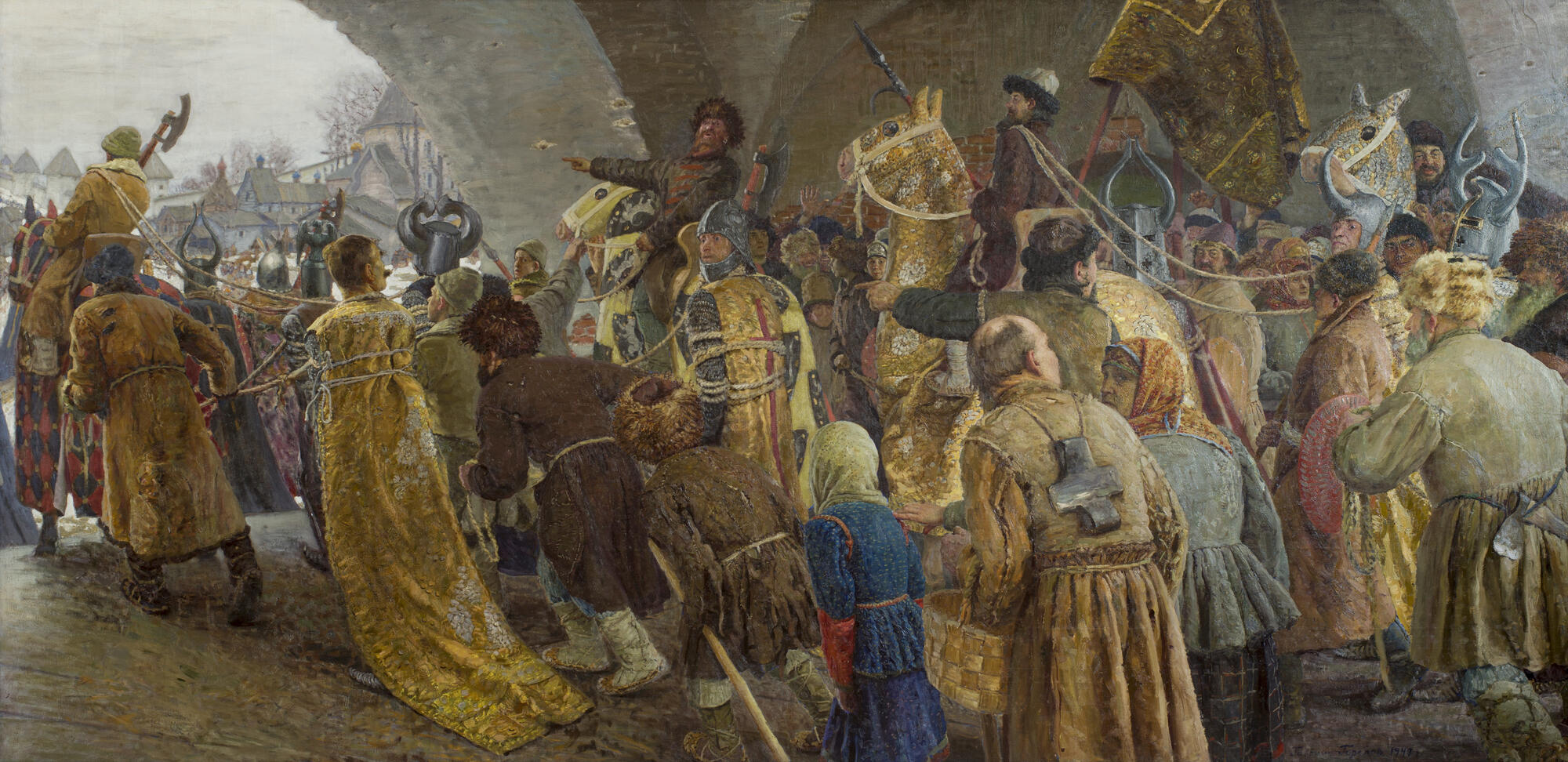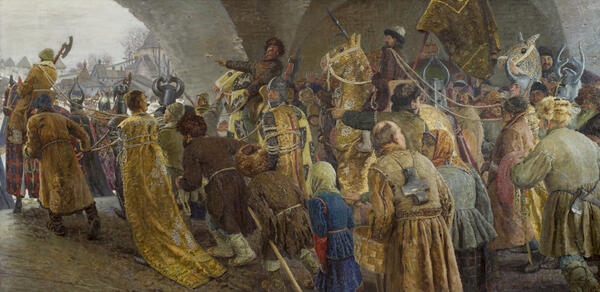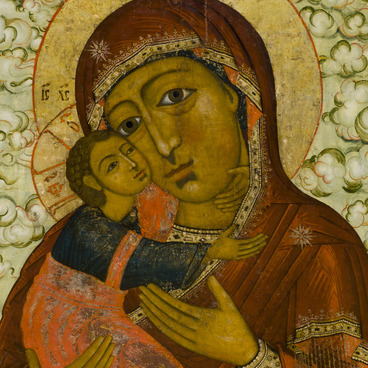Gavriil Gorelov, who painted ‘The Teutonic Knights’, graduated from the Penza Art School, where his teacher was the famous artist Konstantin Savitsky. Gorelov entered the Academy of Arts in St. Petersburg without taking any exams. At the Academy, one of his teachers happened to be Ilya Repin — a key figure in Russian Realism movement. Gorelov developed his artistic principles when he was still a student — under the influence of Repin, he began working in the history painting genre. Throughout his life, the artist was inspired by the work of his teacher, whose influence can be easily traced in the multi-figure scenes as well as in the depiction of emotional experiences, which are both characteristic of Gorelov’s paintings.
After the Bolshevik revolution in 1917, Gorelov continued creating history paintings. He joined the Association of Artists of Revolutionary Russia, painted multi-figure compositions depicting the Revolution, but above all, he harbored a penchant for the history of Russia.
“The Teutonic Knights” became a classic in the Russian art of the 20th century. The painting was completed in 1947 and in the same year proved hugely successful at the All-Union Fine Art Exhibition in Moscow. The canvas made a tremendous impression upon the viewers, mainly because of addressing the matters of patriotism and heroism — the scene that the artist depicted in the painting is closely associated with Alexander Nevsky defeating the Teutonic Order and the Battle on the Ice. The picture was immediately included in the list of the best works by Gorelov, who had already become widely known as a master of the history painting genre.
The plot of this multi-figure composition is based on a heroic event of the Russian history, when the city of Pskov, the northern stronghold of the Russian lands, was liberated from the knights of the Teutonic Order. In 1242, Russian militias and Novgorod “druzhinas”, or military forces, led by Alexander Nevsky liberated the city from a year and a half occupation. Gavriil Gorelov portrayed the moment when the knights, who had been taken captive and tied, enter Pskov. When painting the ordinary people, the artist rendered their joy, exultation, pride, a sense of unity enhanced by their common victory.
“Knight-dogs” is a collocation that Karl Marx used in his “Chronological Extracts” to refer to the knights of the Teutonic Order. It became a set expression, and the image of the “knight-dogs” became popular after the release of Sergei Eisenstein’s film ‘Alexander Nevsky’.
The painting was donated to the museum collection in 1948 by the State Committee on the Arts regulated by the Council of Ministers of the USSR.
After the Bolshevik revolution in 1917, Gorelov continued creating history paintings. He joined the Association of Artists of Revolutionary Russia, painted multi-figure compositions depicting the Revolution, but above all, he harbored a penchant for the history of Russia.
“The Teutonic Knights” became a classic in the Russian art of the 20th century. The painting was completed in 1947 and in the same year proved hugely successful at the All-Union Fine Art Exhibition in Moscow. The canvas made a tremendous impression upon the viewers, mainly because of addressing the matters of patriotism and heroism — the scene that the artist depicted in the painting is closely associated with Alexander Nevsky defeating the Teutonic Order and the Battle on the Ice. The picture was immediately included in the list of the best works by Gorelov, who had already become widely known as a master of the history painting genre.
The plot of this multi-figure composition is based on a heroic event of the Russian history, when the city of Pskov, the northern stronghold of the Russian lands, was liberated from the knights of the Teutonic Order. In 1242, Russian militias and Novgorod “druzhinas”, or military forces, led by Alexander Nevsky liberated the city from a year and a half occupation. Gavriil Gorelov portrayed the moment when the knights, who had been taken captive and tied, enter Pskov. When painting the ordinary people, the artist rendered their joy, exultation, pride, a sense of unity enhanced by their common victory.
“Knight-dogs” is a collocation that Karl Marx used in his “Chronological Extracts” to refer to the knights of the Teutonic Order. It became a set expression, and the image of the “knight-dogs” became popular after the release of Sergei Eisenstein’s film ‘Alexander Nevsky’.
The painting was donated to the museum collection in 1948 by the State Committee on the Arts regulated by the Council of Ministers of the USSR.



